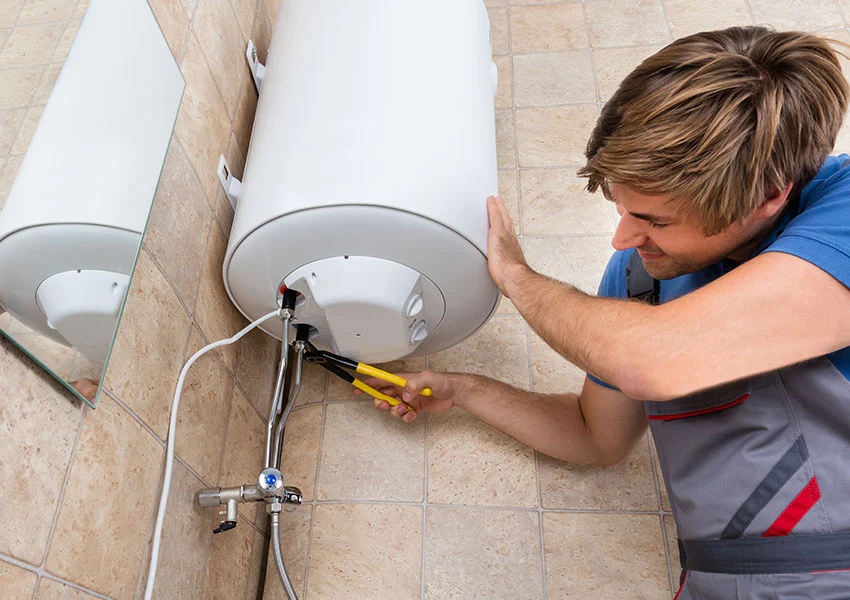Ways to Keep Your Home's Hot Water System in Good ConditionCaring for Your Home's Hot Water System: Essential TipsKey Tips on Maintaining Your Home's Hot Water System
Ways to Keep Your Home's Hot Water System in Good ConditionCaring for Your Home's Hot Water System: Essential TipsKey Tips on Maintaining Your Home's Hot Water System
Blog Article
This article which follows in relation to What Kind of Maintenance Do Water Heaters Need? is particularly interesting. Don't miss it.

Hot water is important for day-to-day comfort, whether it's for a revitalizing shower or washing recipes. To ensure your hot water system runs successfully and lasts much longer, regular upkeep is key. This post provides useful pointers and insights on how to maintain your home's warm water system to avoid interruptions and pricey repair work.
Intro
Preserving your home's hot water system might appear challenging, yet with a few basic actions, you can ensure it runs efficiently for many years ahead. This guide covers whatever from understanding your warm water system to do it yourself maintenance ideas and recognizing when to hire specialist aid.
Relevance of Maintaining Your Hot Water System
Routine upkeep not just extends the life expectancy of your warm water system yet also ensures it operates effectively. Disregarding maintenance can result in decreased effectiveness, greater power costs, and also premature failure of the system.
Signs Your Warm Water System Needs Maintenance
Knowing when your hot water system needs interest can avoid major concerns. Look out for signs such as inconsistent water temperature, strange noises from the heater, or rusty water.
Comprehending Your Warm Water System
Before diving into maintenance tasks, it's useful to comprehend the basic elements of your warm water system. Commonly, this includes the water heater itself, pipelines, anode rods, and temperature controls.
Month-to-month Upkeep Tasks
Normal regular monthly checks can assist catch minor issues prior to they escalate.
Flushing the Hot Water Heater
Purging your water heater eliminates sediment build-up, boosting efficiency and lengthening its life.
Monitoring and Changing Anode Rods
Anode rods prevent deterioration inside the container. Checking and changing them when worn is important.
Examining and Adjusting Temperature Level Setups
Adjusting the temperature level settings guarantees optimal performance and safety.
Do It Yourself Tips for Upkeep
You can carry out a number of maintenance jobs on your own to keep your hot water system in leading problem.
Looking for Leaks
Frequently inspect pipelines and links for leaks, as these can bring about water damages and greater bills.
Examining Stress Relief Valves
Examining the stress relief valve guarantees it operates properly and prevents too much pressure build-up.
Protecting Pipes
Shielding warm water pipes lowers warm loss and can conserve energy.
When to Call a Specialist
While do it yourself maintenance is beneficial, some concerns require specialist know-how.
Complex Concerns Requiring Professional Assistance
Examples include significant leaks, electric problems, or if your hot water heater is regularly underperforming.
Regular Expert Upkeep Benefits
Expert upkeep can include detailed examinations, tune-ups, and guaranteeing conformity with safety requirements.
Verdict
Regular upkeep of your home's warm water system is necessary for efficiency, durability, and price financial savings. By complying with these ideas and knowing when to seek specialist assistance, you can make sure a dependable supply of warm water without unforeseen disturbances.
How to Maintain an Instant Hot Water Heater
Before tinkering with your hot water heater, make sure that it’s not powered on. You also have to turn off the main circuit breaker and shut off the main gas line to prevent accidents. Also turn off the water valves connected to your unit to prevent water from flowing into and out of the appliance. 2. When you’re done, you have to detach the purge valves’ caps. These look like the letter “T” and are situated on either side of the water valves. Doing so will release any pressure that has accumulated inside the valves while at the same time avoid hot water from shooting out and burning your skin. 3. When the purge valves’ caps are removed, you have to connect your hosing lines to the valves. Your unit should have come with three hoses but if it didn’t, you can purchase these things from any hardware or home repair shops. You can also get them from retail stores that sell water heating systems. Read the user’s manual and follow it to complete this task properly. When the hosing lines are connected, open the purge port’s valves. 4. You should never use harsh chemical cleaners or solutions when cleaning your unit. Make use of white vinegar instead. It should be undiluted and you’ll probably use about 2 gallons. 5. Now flush your water heater. This task should probably take about 40 minutes. We can’t give you specific directions for this because the procedure is carried out depending on the type, model and brand of your heater. With that being said, refer to the user’s manual. 6. When you’re done draining the unit, you have to turn off the purge port valves again. Remove the hosing lines that you earlier installed on each of the water valves. Put the valve caps (purge port) back in their respective places and be very careful so as not to damage the rubber discs that are found inside these caps. 7. Now that everything’s back in place, check your user’s manual again to find out how to reactivate your water heating system. 8. Once it is working, turn one of your hot water faucets on just to let air pass through the heater’s water supply pipes. Leave the tap on until water flows smoothly out of it. https://www.orrplumbing.com/blog/2014/september/how-to-maintain-an-instant-hot-water-heater/

We had been made aware of that editorial on Tips For Maintaining Your Hot Water Heater from someone on a different blog. Loved our piece? Please share it. Help somebody else discover it. Bless you for being here. Come back soon.
Visit Our Website Report this page